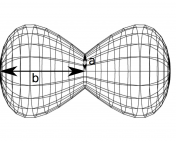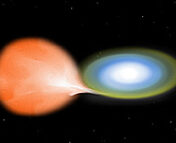Title: Unveiling the 3D structure of nova shells with MUSE – The case of RR Pic
Authors: Lientur Celedón, Linda Schmidtobreick, Claus Tappert, and Fernando Selman
First Author’s Institution: Instituto de Física y Astronomía, Universidad de Valparaíso, Valparaíso, Chile
Status: Accepted to A&A [open access]
Picture a binary star system where one star is a dense white dwarf, and the other is a typical, normal star. Now, as this white dwarf starts accumulating material from the normal star, a fascinating event takes place, a nova eruption. The term nova, stemming from the Latin word for new, describes a sudden burst of intense brightness of the star system. This spectacular release of energy propels material outward, forming a distinctive shell around the stellar pair (see Figure 1 for artist’s illustration) that enriches the chemical composition of the surrounding interstellar medium. The geometry of this shell is closely linked to the physical characteristics of the white dwarf and the velocity of the ejected material. Studying these nova shells therefore provides crucial insights into the dynamic processes and evolutionary pathways of novae.
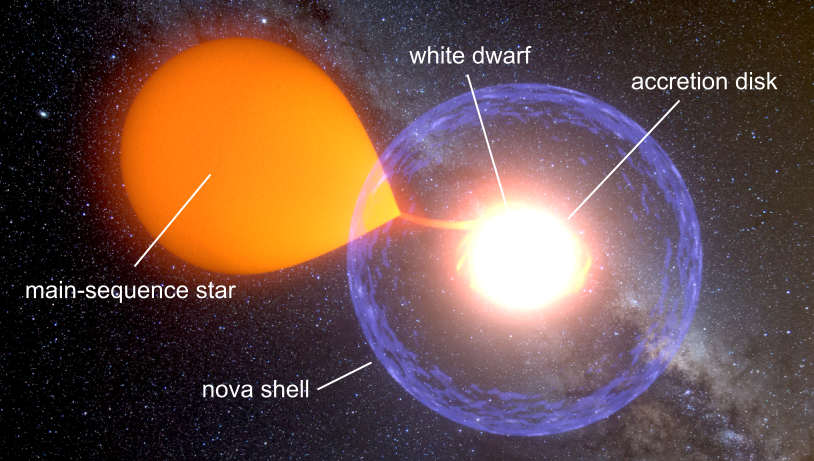
In their recent paper, today’s authors utilized integral field spectroscopy (IFS), a novel observational technique in astronomy that has seen less frequent use in nova research (so far!). Through their study of the nova shell, they not only shed light on the intricacies of these objects, but also showcase the potent capabilities of IFS for this area of research.
The Power of Integral Field Spectroscopy
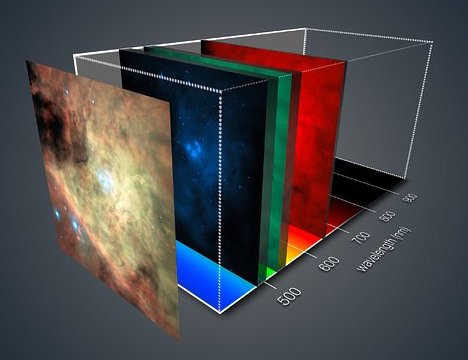
IFS involves capturing spatial and spectral information simultaneously, providing a detailed data product called datacube. Think of a datacube as a 3D image of an object, where each pixel of the image contains spectral information. You can also see a datacube as a stack of images of the same object at different wavelengths (see Figure 2). The richness of the datacube allows astronomers to extract various details about the object, including its chemical composition, kinematics, and morphology.
Using the Multi-Unit Spectroscopic Explorer (MUSE), an optical IFS instrument installed on the Very Large Telescope (VLT) in Chile, the authors observed RR Pictoris (RR Pic), one of the oldest recorded novae. Its considerable age of nearly 100 years makes it an ideal object for investigating the long-term behavior of nova shells. Examining nova shells at different epochs allows us to comprehend how their brightness and structure evolve over time. Interestingly, there has been no study on the nova shell of RR Pic over the past 25 years.
New RR Pic View with MUSE
To accurately extract the shell structure, the authors applied a selection criterion on the MUSE data, effectively distinguishing signal from noise. They then generated images of the shell structure at distinct emission line wavelengths, such as the hydrogen, oxygen, and nitrogen lines, as shown in the top row of Figure 3. These images reveal that the RR Pic shell consists of an equatorial ring (a flattened, ring-shaped structure of the nova shell that lies along the plane of the binary system) and polar filaments (fragmented blobs structures extending outward from the system) structures, agreeing with previous studies of the object. Complementing this, the spectra derived from the datacube (Figure 3, bottom graphs), indicates that the equatorial ring structure of the shell is dominated by hydrogen emission, while the polar filaments primarily exhibit oxygen emission with minor traces of hydrogen.
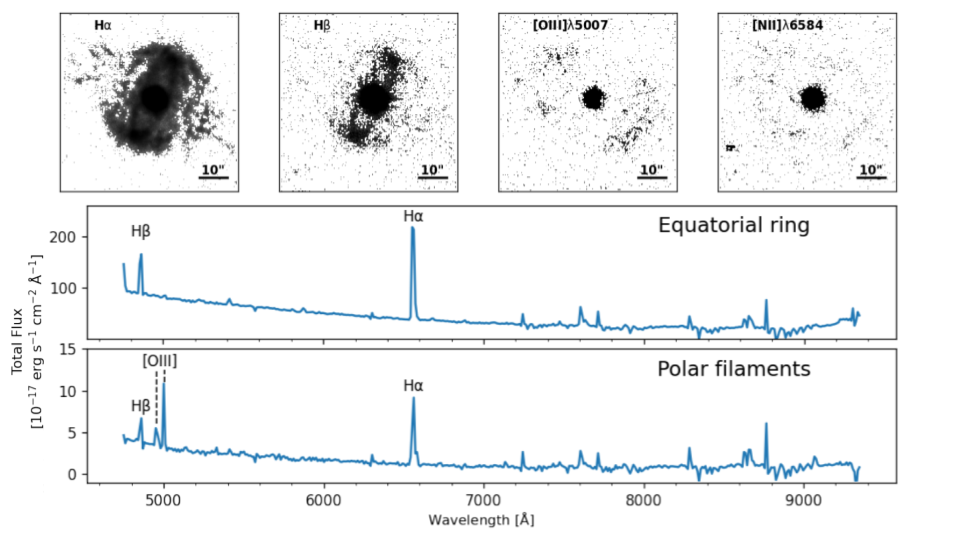
The authors proceeded to construct a 3D view of the RR Pic nova shell (see Figure 4). This data projection helps in refining the constraints on the geometry of the shell, particularly the equatorial ring. Assuming a circular geometry and that the shell expands radially from the central stars, the authors determined that the ring spans a radius between 6,000 to 10,000 au (astronomical unit, which is the distance from Earth to the Sun), with an inclination of 74 degrees relative to the sky. The authors argue that this inclination of the shell’s equatorial ring corresponds to that of the binary system of RR Pic.
Upon comparing the positions of the major knots and features of the nova shell with the latest observations taken in 1998, the authors found that the shell has expanded significantly since and there is sign of deceleration. This finding suggests that the nova shell of RR Pic is still in the free expansion phase. Interestingly, this contradicts the proposed behavior of nova shells, which suggests that their expansion velocity will decrease by half after about 65 years following the nova event – recall that RR Pic is nearly a century old (for those curious about the nova shell deceleration study, the research paper can be found here). The MUSE data also reveal that the different parts of the shell expands at different velocities, creating asymmetry in the shell structures, especially in the polar filaments.
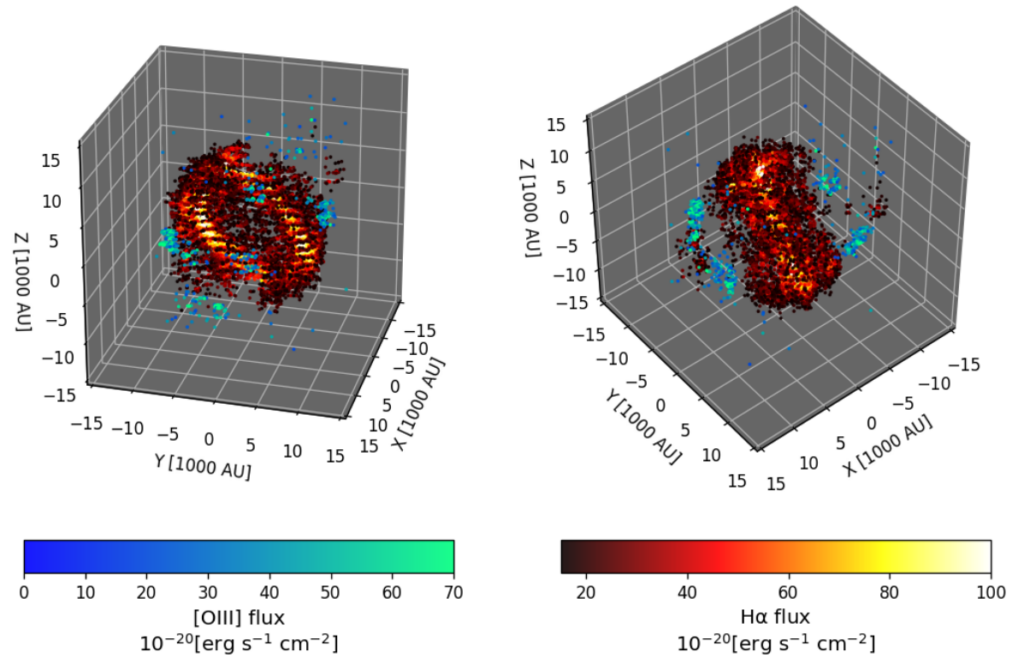
This IFS study of the nova shell of RR Pic serves as proof of the capabilities of IFS to enhance the study of the dynamics and evolution of novae. The detailed measurements from the new observations challenge existing assumptions about the object, including the proposed timeline for expansion velocity deceleration. This revelation opens new avenues for understanding the intricacies of this object. Importantly, this study demonstrates that the application of IFS in nova research holds promise for uncovering more information about novae phenomena.
Astrobite edited by Sarah Bodansky
Featured image credit: Adapted from Gill & O’Brien (1998) paper (referenced in today’s paper) and flaticon.com

